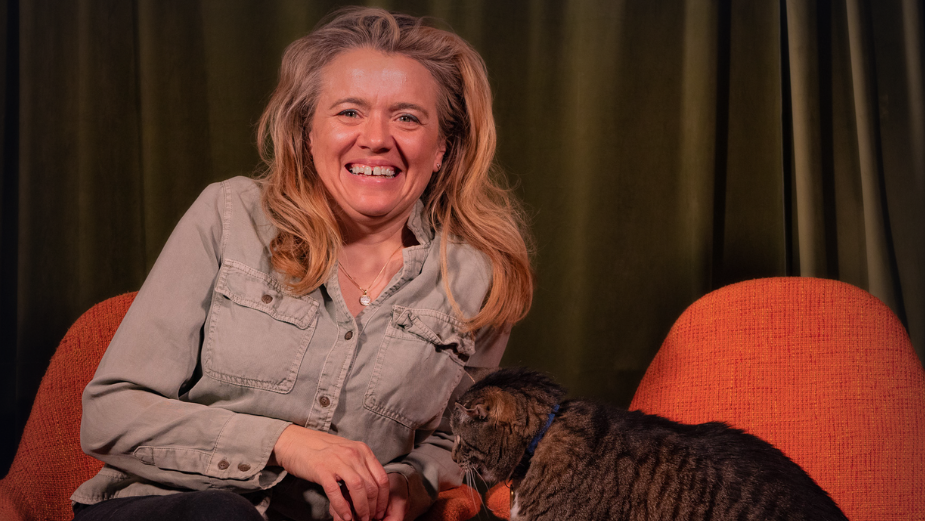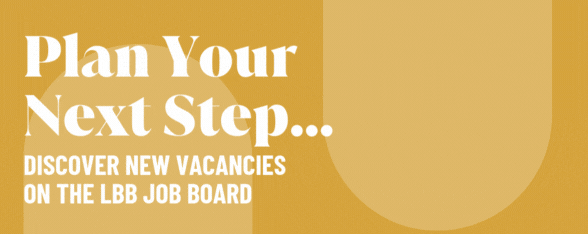
Finely Sliced: Following Your Instincts with Betty Jo Moore

Betty Jo Moore is an editor at Final Cut New York. A resident of Chicago, native Canadian and avid potter, Betty Jo is passionate about collaborating with rising female directors such as Liz Sargent and Colleen Dodge. Her work on Dodge’s ‘Polished’, a reproductive rights story, has taken home multiple festival awards including Berlin and Barcelona and earned her Best Editor at the 2022 Indie Motion FIlm Awards.
LBB> The first cut is the deepest: how do you like to start an editing project?
Betty Jo> With a notepad, bagel and hot coffee.
LBB> Non-editors often think of editing just in technical terms but it's integral to the emotion and mood of a film. How did you develop that side of your craft?
Betty Jo> Follow my instinct. Keep it honest. Then listening to viewer perspectives helps refine the first two.
LBB> How important is an understanding of story and the mechanics of story?
Betty Jo> To me, they are foundations for sitting in the chair. It is a vocabulary shareable with clients, particularly useful when articulating an abstract idea. And, of course, a common language means quicker collaboration and trust.
LBB> Rhythm and a sense of musicality seem to be intrinsic to good editing (even when it's a film without actual music) – how do you think about the rhythm side of editing, how do you feel out the beats of a scene or a spot? And do you like to cut to music?
Betty Jo> I love to cut to music, and I love my music video-cutting experiences. I'm very proud of the music video for Dermot Kennedy's ‘Outnumbered.’
That being said, I like to watch my edits with all audio muted for pieces without actual music. Watching this way helps me sense out any edits I imposed on that could benefit from pacing - a viewable silent poem. Without music, you can still edit with rhythm. Pacing that feels fluid and not compromised can be pleasing. If we know our eyes dart under stress, pacing can be frenetic and sharper, like our breath. It can lift an edit and go far toward preserving the viewer's attention and enjoyment. Which is a way to show we value their attention.
LBB> Tell us about a recent editing project that involved some interesting creative challenges.
Betty Jo> A short film I worked on, ‘Triplets’, features a professional ballet dancer pregnant with triplets. She was filmed dancing during each trimester of her pregnancy, and audio interviews were recorded. After the babies were born, there was one last shoot with them crawling all over her. The creative challenge was combining dancing scenes filmed months apart and choosing audio interview moments that make us feel as raw as she sounds. I also had to have the film finish on a question, which is not an ending.
LBB> In the US we know that editors are much more heavily involved across the post production process than in Europe - what's your favourite part of that side of the job?
Betty Jo> I like that I am in contact with the director early, before the shoot, after it wraps, and definitely for the early edits. I also like listening in on pre-pro calls as I'm always curious how they will create a world that is best technically - for the camera - but also carries the story.
LBB> What's harder to cut around – too much material or not enough? (And why?)
Betty Jo> I like to review and assign value to all the footage before I start to select and edit, so it comes down to being on the same page about how to spend time. If time is tight and the path forward is unclear, it can feel like too much material. I am okay with not enough material if it narrows out ambiguity and presents creative opportunities. Limits can narrow options, which gets the edit exploration started sooner.
LBB> Which commercial projects are you proudest of and why?
Betty Jo> I'm very proud of ‘#NeverNotAMom’ for Boppy. I love its quiet sounds and the natural beauty the directors captured. It weaves multiple lives of mums in a gentle gait. I still get relaxed whenever I watch this spot.
LBB> There are so many different platforms for film content now, and even in advertising something can last anything from a few seconds to a couple of hours. As an editor, are you seeing a change in the kind of projects you're getting from brands and agencies?
Betty Jo> I think the new spot lengths are fun and very freeing. Edits can be proposed around an outtake or an improvised or unscripted moment. I'm impressed when a six-second bumper can make me laugh. And with the longer-form edits, I'm free to be more artistic and experimental, which I love.
LBB> Who are your editing heroes and why? What films or spots epitomise good editing for you?
Betty Jo> Feature-length editors are my heroes for their commitment, endurance, and the faith placed in them by the film's director(s).
The first time a film's editing made an impression on me was ‘Run Lola Run’. It pushed its art form and stood apart from its contemporaries. Another film that really opened my mind is ‘The Diving Bell and the Butterfly’; a story mostly told from the point of view of a paralysed person's left eye or from within his memories.
LBB> Have you noticed any trends or changes in commercial editing over recent years.
Betty Jo> It's not a trend, but I think of the 2020 lockdown as the most significant change. First, all production halted for a beat, and we just sat waiting. We then got very busy mining the footage of past shoots for new purposes, looking with fresh eyes at stock footage. Footage shot on a smartphone was no longer just a 'style' choice. The show went on. Production incrementally re-opened, and technology raced to meet our remote "on-set" needs. It definitely changed the way we work and communicate.















